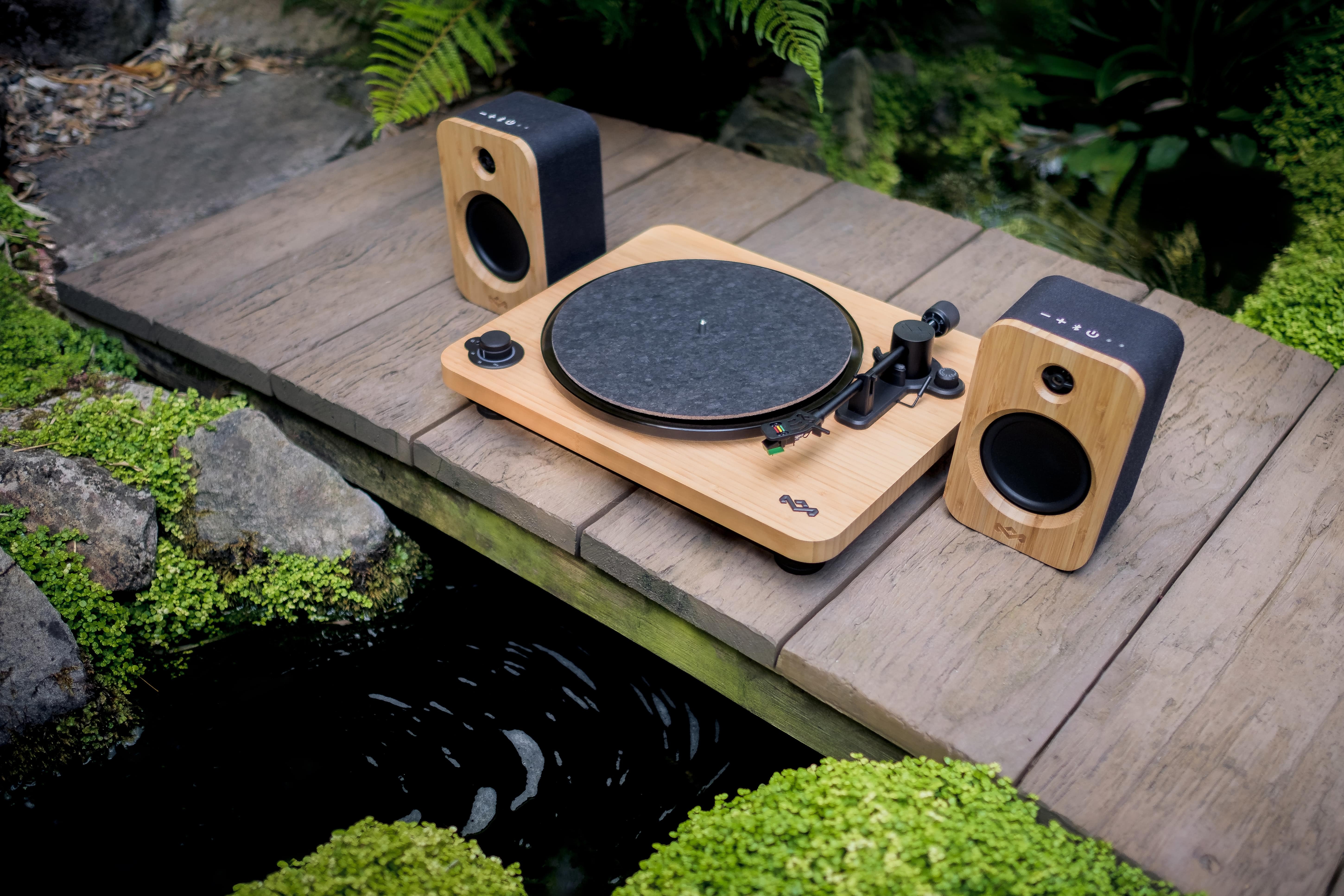When Thomas Edison put the finishing touches on the phonograph in 1877, he likely didn’t imagine it would revolutionize how humans engage with music. But it did—thanks to the groundbreaking work of inventors like Alexander Graham Bell, Emile Berliner, and Peter Carl Goldmark. What we now call record players reached their peak in the mid-20th century, only to fade with the rise of cassette tapes, CDs, portable devices, and streaming. However, in recent years, there has been a remarkable resurgence, with brands like House of Marley leading the charge by focusing on premium audio experiences. But when exactly were record players invented, and what was the historical background? How did they shape the music industry over time? The desire to capture and replay sound is deeply rooted in human nature, but it wasn't until the late 19th century that this dream became reality. The first major step came with the invention of the phonautograph. In 1857, Édouard-Léon Scott de Martinville patented the phonautograph, a device that could visually record sound waves on paper. Though it couldn’t play back the recordings at the time, his work laid the foundation for future audio technology. It wasn’t until 2008 that researchers successfully played back one of his original recordings, proving the significance of his early efforts. Thomas Edison, known for his many inventions, considered the phonograph his favorite creation. He built the first working model in 1877, using tin foil cylinders to record and play back sound. Although he initially envisioned it as a tool for business and communication, it soon found its place in the world of music. By the end of the 19th century, phonographs were being sold to the public, marking the beginning of recorded music as a commercial product. Edison’s phonograph was a breakthrough, but it was the innovations of others that truly shaped the future of record players. Alexander Graham Bell and Emile Berliner played crucial roles in advancing the technology. Bell, famous for inventing the telephone, later turned his attention to improving the phonograph. At his Volta Laboratory, he worked with colleagues to develop the graphophone, which used wax cylinders instead of tin foil. This innovation allowed for clearer sound and longer recordings, setting the stage for more advanced audio devices. Emile Berliner took the concept even further with the invention of the gramophone in 1887. Unlike the cylinder-based phonographs, his design used flat discs, which made mass production easier and more practical. This shift marked the beginning of the modern record player era. While the earliest versions of record players emerged in the late 19th century, the golden age began in the 1950s and lasted through the 1970s. During this time, vinyl records became the dominant format for music distribution. Peter Carl Goldmark’s invention of the long-playing vinyl record in the 1940s changed everything. His design, which used vinyl instead of shellac, allowed for longer playing times and better sound quality. He also introduced a slower rotation speed of 33 1/3 revolutions per minute, becoming the standard for the industry. This innovation brought recorded music into millions of homes and transformed how people listened to music. In 1931, Alan Dower Blumlein pioneered stereophonic sound, creating a more immersive listening experience. The first commercially available stereo LP was released in 1958, marking a major shift in how music was produced and consumed. This advancement led to the development of home audio systems, making high-quality sound more accessible than ever before. For decades, record players were a common sight in homes, but with the rise of digital formats, they seemed destined for obsolescence. However, something unexpected happened: vinyl made a comeback. As streaming services grew in popularity, many believed that physical formats like vinyl would disappear. Yet, the opposite occurred. A cultural movement known as the "vinyl resurgence" began, with more people choosing to listen to records for their unique sound and tactile experience. According to the Recording Industry Association of America, vinyl sales have been increasing for seventeen consecutive years, showing that this format is not just a nostalgic trend—it's here to stay. Modern record players blend traditional analog sound with contemporary convenience. Wireless turntables, compact designs, and compatibility with smart devices make them more versatile than ever. Whether you're using headphones or a speaker system, the warm, rich tones of vinyl remain unmatched. Though invented over a century ago, the record player continues to evolve. It bridges the gap between analog and digital, preserving the soul of music while adapting to modern needs. House of Marley embodies this philosophy, offering products that are both innovative and rooted in tradition. Their commitment to quality, sustainability, and authenticity makes them a leader in the world of audio technology. Sources: The Fondation Napoleon. THE PHONAUTOGRAPHE. https://www.napoleon.org/en/history-of-the-two-empires/objects/edouard-leon-scott-de-martinvilles-phonautographe/ The Sumter County Museum. The Edison Phonograph. https://www.sumtercountymuseum.org/blog-fromthecollection/the-edison-phonograph Encyclopedia Britannica. Alexander Graham Bell. https://www.britannica.com/biography/Alexander-Graham-Bell#ref19880 Encyclopedia Britannica. Emil Berliner. https://www.britannica.com/biography/Emil-Berliner National Inventors Hall of Fame. Peter C. Goldmark. https://www.invent.org/inductees/peter-c-goldmark Emastered Blog. Stereophonic Sound: All You Need to Know About It. https://emastered.com/blog/stereophonic-sound The Recording Industry Association of America. Year-end 2023 RIAA Revenue Statistics. https://www.riaa.com/wp-content/uploads/2024/03/2023-Year-End-Revenue-Statistics.pdf liquid laundry detergent fragrance, softener essential oil, fragrance for fabric-care,highly concentrated essentiial oil,fragrance for laundry liquid Guangzhou Dingjin Flavors & Fragrances Co.,Ltd , https://www.dingjinflavors.comThe Early Beginnings
The Phonautograph and Its Limitations
Thomas Edison's Phonograph
Advancements and Innovations
Alexander Graham Bell's Improvements
Emile Berliner's Gramophone
The Golden Age of Record Players
The Rise of Vinyl Records
Stereo Sound and New Formats

The Modern Era and Resurgence
The Decline and Resurgence of Vinyl
Record Players Today
House of Marley's Dedication to Quality Sound